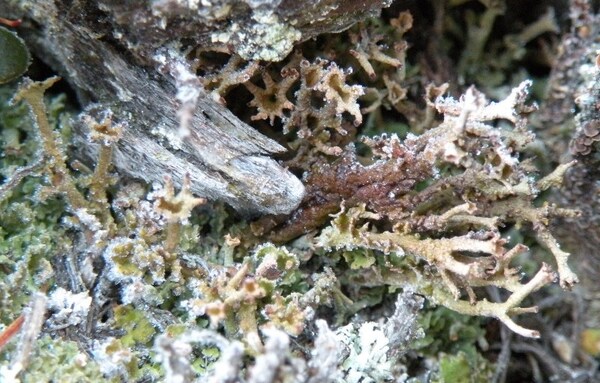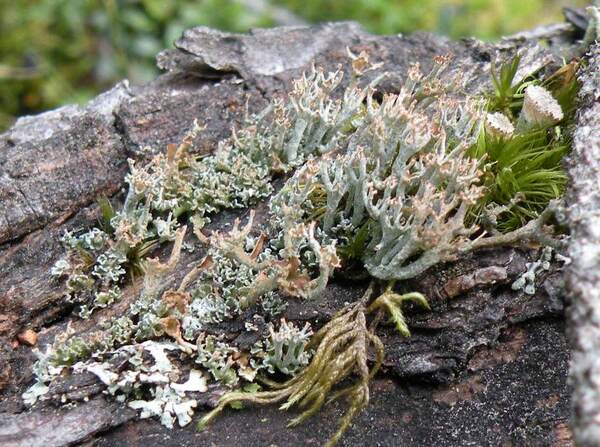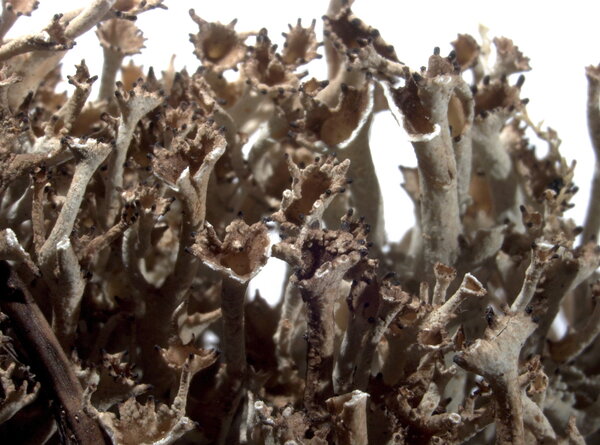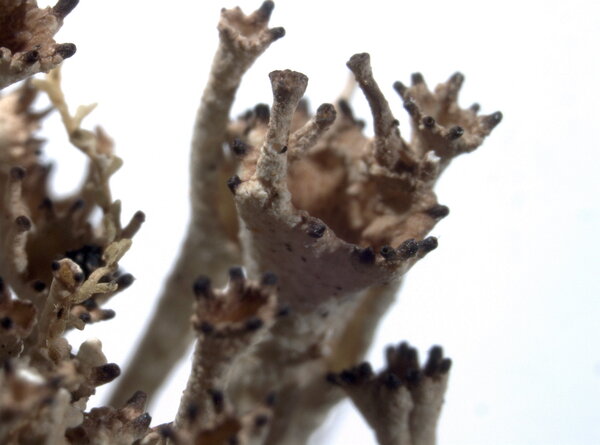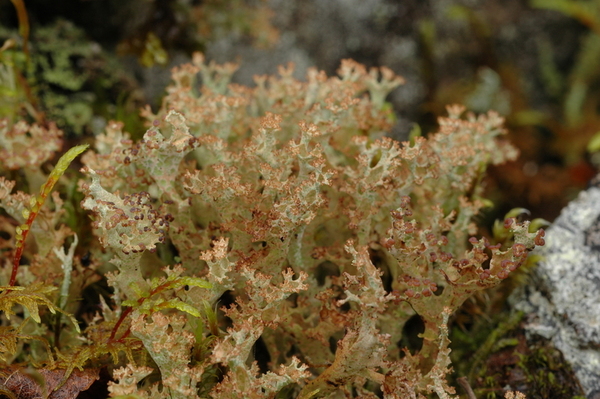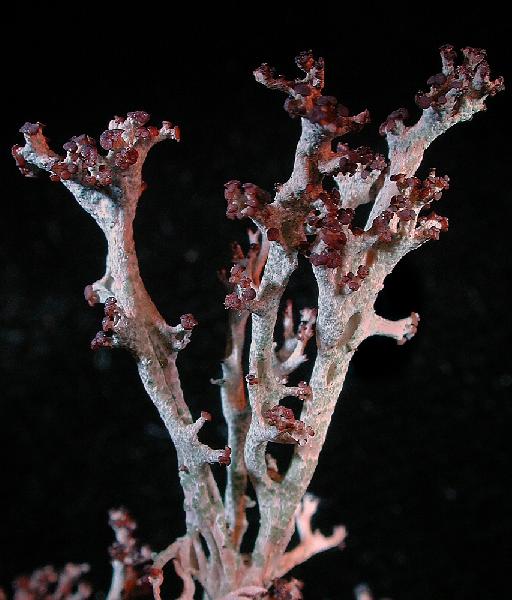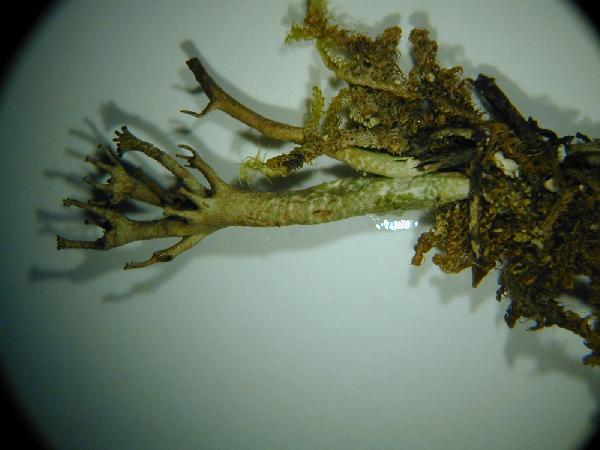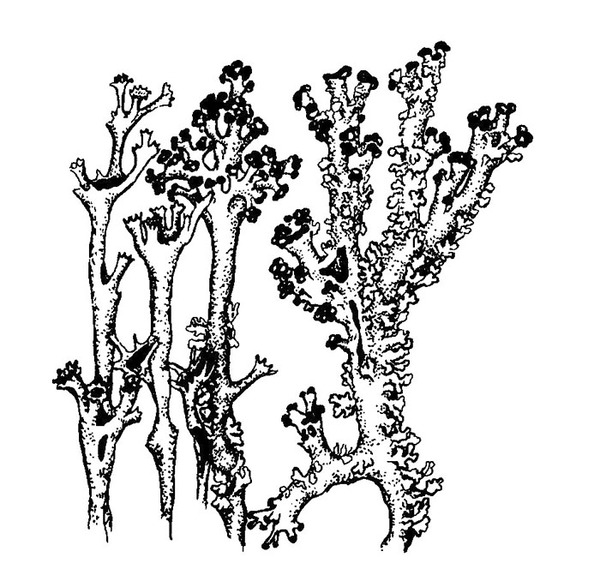Cladonia crispata (Ach.) Flot.
in Wendt, Therm. Warmbrunn: 93, 1839. Basionym: Baeomyces turbinatus var. crispatus Ach. - Meth. Lich.: 341, 1803.
Synonyms: Cladonia crispata var. cetrariiformis (Delise) Vain.; Cladonia crispata var. dilacerata (Schaer.) Malbr.; Cladonia crispata var. divulsa (Delise) Arnold; Cladonia crispata var. elegans (Delise) Vain.; Cladonia crispata var. infundibulifera (Schaer.)
Distribution: N - Frl, Ven (Nimis 1994, Caniglia & al. 1999, Nascimbene & Caniglia 2003c, Nascimbene 2008), TAA (Nascimbene 2006c, 2008b, Nascimbene & Caniglia 2000, Caniglia & al. 2002, Nascimbene & al. 2005, 2006, 2008c, 2022), Lomb (Rivellini 1994, Rivellini & Valcuvia 1996, Nascimbene 2006, Gheza 2019b, Gheza & al. 2022), Piem (Morisi & Sereno 1995, Isocrono & al. 2004, Isocrono & Piervittori 2008), VA. C - Umb (Ravera & Di Toma 2003).
Description: Primary thallus squamulose, persistent or evanescent, the squamules middle-sized, 1-4 mm long, c. 0.5 mm broad, indented, grey-green above, white beneath. Podetia hollow inside, greenish grey to brown, extremely polymorphic, slender, 2-7 cm tall and up to 4 mm thick (usually much less), unbranched or sparingly branched in upper part, with open axillary or terminal funnels which proliferate from margins, thus terminating in a cup-like perforation with spinulose margins, not melanotic at base, continuously corticate to areolate, esorediate, sometimes squamulose. Apothecia dark brown, convex, usually stipitate, developing at the margins of cups. Asci 8-spored, clavate, thickened at apex, with a K/I+ blue tholus and a K/I+ strongly blue outer gelatinous sheath, Cladonia-type. Ascospores 1-celled, hyaline, ellipsoid. Pycnidia dark, semi-immersed, mostly in the margins of cups or on the primary squamules, often constricted at base, with a reddish jelly. Conidia hyaline, curved. Photobiont chlorococcoid. Spot tests: K-, C-, KC-, P-, UV+ white. Chemistry: squamatic acid and variable amounts of barbatic acid. In Central Europe rarely also with thamnolic acid (K+ and P+ yellow).Note: a boreal-montane to subarctic-subalpine, circumpolar species found on soil, more rarely on lignum, in open habitats, in areas near treeline with siliceous substrata.
Growth form: Fruticose
Substrata: soil, terricolous mosses, and plant debris
Photobiont: green algae other than Trentepohlia
Reproductive strategy: mainly sexual
Commonnes-rarity: (info)
Alpine belt: extremely rare
Subalpine belt: rather common
Oromediterranean belt: absent
Montane belt: extremely rare
Submediterranean belt: absent
Padanian area: absent
Humid submediterranean belt: absent
Humid mediterranean belt: absent
Dry mediterranean belt: absent
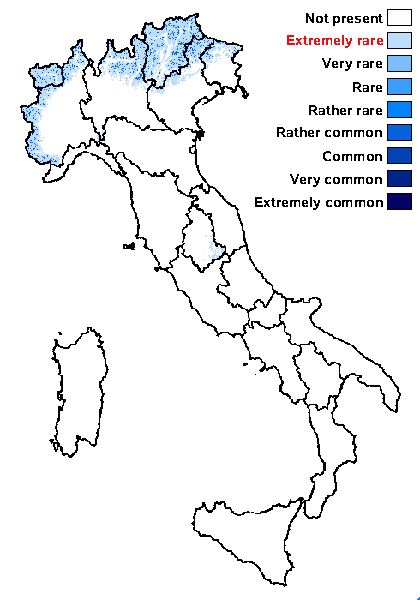
Predictive model
Herbarium samples
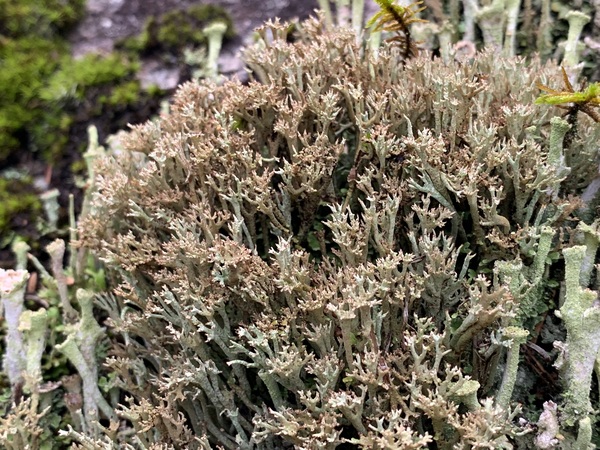
Gabriele Gheza - https://lichenidilombardia.home.blog
Italy, Lombardia, Sondrio, Valmasino, 1047 m
08/2019
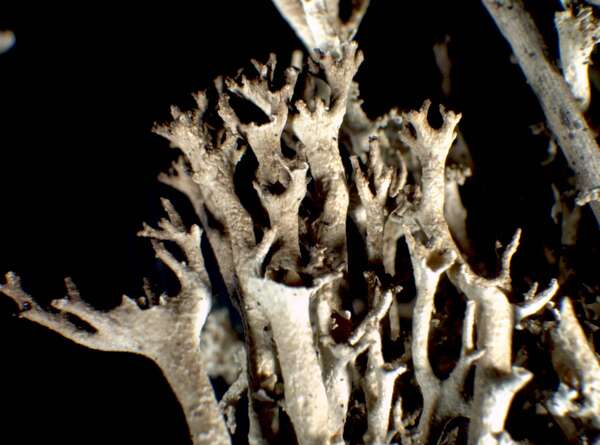

P.L. Nimis; Owner: Department of Life Sciences, University of Trieste
Herbarium: TSB (2121)
2001/12/24
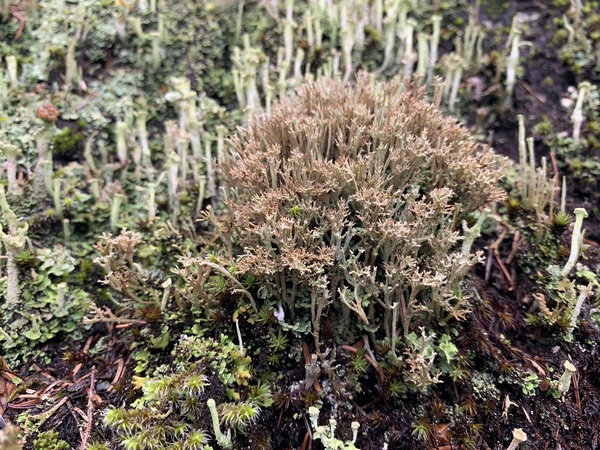
Gabriele Gheza - https://lichenidilombardia.home.blog
Italy, Lombardia, Sondrio, Valmasino, 1047 m
08/2019
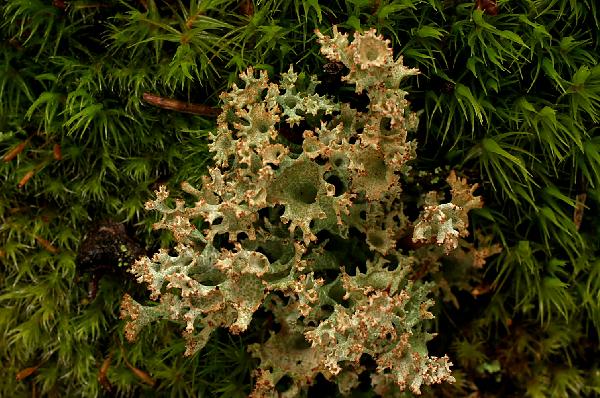
Ulrich Kirschbaum CC BY-SA 4.0 - Source: https://www.thm.de/lse/ulrich-kirschbaum/flechtenbilder
Sweden: Värmland.
Growth form: Fruticose
Substrata: soil, terricolous mosses, and plant debris
Photobiont: green algae other than Trentepohlia
Reproductive strategy: mainly sexual
Commonnes-rarity: (info)
Alpine belt: extremely rare
Subalpine belt: rather common
Oromediterranean belt: absent
Montane belt: extremely rare
Submediterranean belt: absent
Padanian area: absent
Humid submediterranean belt: absent
Humid mediterranean belt: absent
Dry mediterranean belt: absent

Predictive model
| Herbarium samples |

Gabriele Gheza - https://lichenidilombardia.home.blog
Italy, Lombardia, Sondrio, Valmasino, 1047 m
08/2019


P.L. Nimis; Owner: Department of Life Sciences, University of Trieste
Herbarium: TSB (2121)
2001/12/24

Gabriele Gheza - https://lichenidilombardia.home.blog
Italy, Lombardia, Sondrio, Valmasino, 1047 m
08/2019

 INDEX FUNGORUM
INDEX FUNGORUM
 GBIF
GBIF
 DOLICHENS
DOLICHENS
